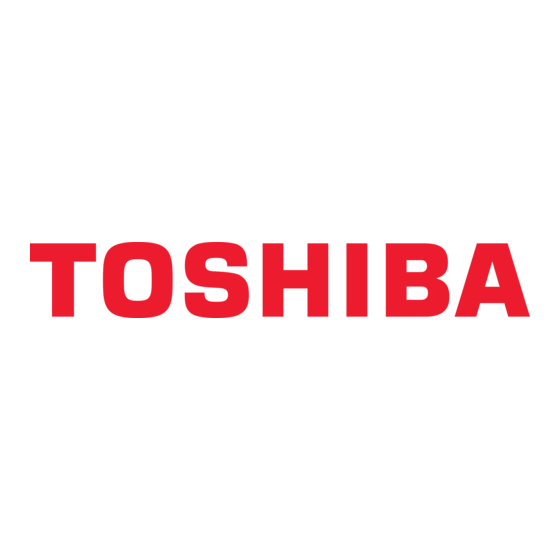
Table of Contents
Advertisement
LX800 Series
User's Guide
If you need assistance:
❖
Technical support is available online at Toshiba's Web site at
support.toshiba.com
many commonly asked technical questions plus many
downloadable software drivers, BIOS updates, and other
downloads.
For more information, see
page 109
At this Web site, you will find answers for
in this guide.
"If Something Goes Wrong" on
GMAD00309012
06/12
Advertisement
Table of Contents

Summarization of Contents
Getting Started
Precautions
Essential safety guidelines to prevent injury and equipment damage.
Connecting to a power source
Instructions for safely connecting the computer to an electrical outlet.
Initial Computer Setup
Steps for first-time computer use, including keyboard, mouse, and software configuration.
Hardware Installation and Management
Memory Management
Instructions for installing, removing, and checking computer memory modules.
Storage Drive Recovery Options
Various methods for restoring and managing the internal storage drive.
Creating and Restoring Recovery Media
Process for creating and using media for system recovery.
Installing Drivers and Applications
Reinstalling essential software and drivers bundled with the computer.
Connecting External Devices
Guidelines for attaching and configuring external hardware, including displays.
Computer Features and Peripherals
Learning the Basics
Introduction to fundamental computing concepts and features.
Using Wireless Devices
Operating wireless mouse, keyboard, and managing Wi-Fi connectivity.
Optical Disc Drive Usage
Guide to using the computer's optical disc drive for media playback and recording.
Exploring Audio Features
Using the computer's audio capabilities, including microphones and speakers.
Using the Memory Card Reader
Inserting and using various types of memory cards.
System Utilities
TOSHIBA Assist
Accessing and using the TOSHIBA Assist utility for system help.
Setting Passwords
Configuring passwords for system security and protection.
TOSHIBA PC Diagnostic Tool
Diagnosing and troubleshooting hardware and software issues.
TOSHIBA Hardware Setup
Configuring BIOS and hardware settings.
TOSHIBA Sleep Utility
Managing power saving modes and USB charging features.
Troubleshooting Common Problems
Easy-to-Fix Problems
Resolving issues like programs stopping responding.
Startup and Operating System Issues
Diagnosing and fixing issues related to computer startup and OS functionality.
Internet and Network Problems
Addressing common issues with internet connectivity and browsing.
Hardware Troubleshooting
Using Device Manager and checking memory, display, disk, audio, printer issues.
Data Backup and Recovery Habits
Recommendations for backing up data and system configuration using Windows features.
Appendix A: Hot Keys and Special Functions
Hot Key Cards Overview
Overview of system functions controllable via hot keys.
Display Brightness and Volume Control
Adjusting screen brightness and audio levels using hot keys.
Wireless Device Management
Managing Wi-Fi and other wireless device status using hot keys.












Need help?
Do you have a question about the LX835-D3205 and is the answer not in the manual?
Questions and answers